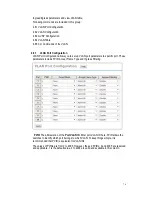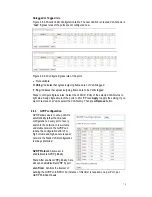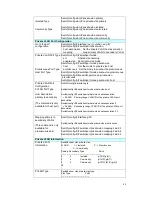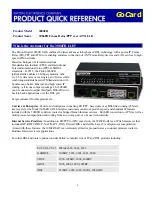
75
4.6
VLAN
A Virtual LAN (VLAN) is a “logical” grouping of nodes for the purpose of limiting a
broadcast domain to specific members of a group without physically grouping the members
together. It means that VLAN can isolate network traffic so that only members of VLAN
could receive traffic from the same VLAN members. Basically, creating a VLAN from a
switch is the logical equivalent of physically reconnecting a group of network devices to
another Layer 2 switch, without actually disconnecting these devices from their original
switches.
JetNet 6910G-M12 supports 802.1Q VLAN. 802.1Q VLAN is also known as Tag-Based
VLAN. This Tag-Based VLAN allows VLAN to be created across different switches (see
Figure 1). IEEE 802.1Q tag-based VLAN makes use of VLAN control information stored in
a VLAN header attached to IEEE 802.3 packet frames. This tag contains a VLAN Identifier
(VID) that indicates which VLAN a frame belongs to. Since each switch only has to check a
frame’s tag, without the need to dissect the contents of the frame, this also saves a lot of
computing resources within the switch.
Figure 802.1Q VLAN
QinQ
The QinQ is originally designed to
expand the number of VLANs by
adding a tag to the 802.1Q packets.
The original VLAN is usually
identified as Customer VLAN (C-
VLAN) and the new added t–g - as
Service VLAN(S-VLAN). By adding
the additional tag, QinQ increases
the possible number of VLANs.
After QinQ enabled, the Managed
Switch can reach up to 256x256
VLANs. With different standard
tags, it also improves the network security.
VLAN Configuration group enables you to Add/Remove VLAN, configure port
Summary of Contents for JetNet 6910G-M12 Series
Page 5: ...1 5 4 About Korenix 141...
















































